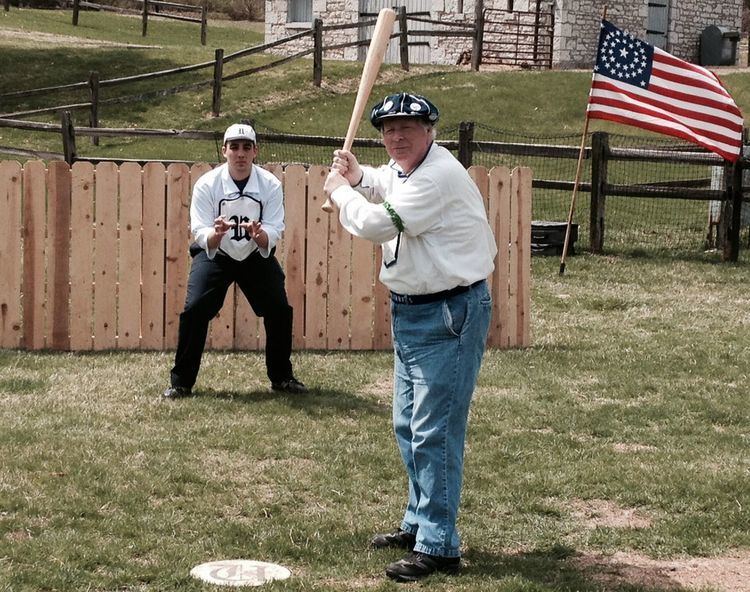 | ||
Vintage base ball is baseball presented as if being played by rules and customs from an earlier period in the sport's history. Games are typically played using rules and uniforms from the 1850s, 1860s and 1880s. Vintage base ball is not only a competitive game, but also a reenactment of baseball life similar to American Civil War reenactment. Players dress in uniforms appropriate to the time period, and many teams appear to be direct copies of teams that existed in the late 19th century. The styles and speech of the 19th century are also used while playing vintage base ball.
The game's name is typically written "base ball" rather than "baseball", as that was the spelling used before the 1880s.
Rules and game play
Although rules differ according to which playing year is being used, there are some mostly common rules differences between the modern game and vintage base ball. In rules of years prior to the 1880s, the ball is pitched underhand in a manner suitable to the batter, or "striker." There are typically no fences as base ball is mostly played in fields and green spaces. However, obstacles (e.g. trees, building, etc.) often come into play. In many of the rules sets the ball can be played off of one bounce to get a striker out. Catching the ball can be very difficult because no gloves are used. This lack of hands, the underhand pitching and other rules make vintage baseball similar to the sport of British baseball.
Because limited descriptive evidence exists to illustrate how live gameplay may have looked or sounded, researchers and vintage "ballists", or ballplayers, engage in an ongoing interpretive discourse about how the game may have actually appeared. There is continuous debate about such points of play as how frequently runners would steal bases, when sliding first became common and what it might have looked like, how strikers would hold or swing the bat, how the umpire's authority evolved, and how players would have conducted themselves on the field.
One commonly held interpretation is that gameplay was marked by a spirit of gentlemanly sportsmanship. Modern vintage ballists will often observe this custom through friendly gestures such as cheering good plays made by opposing players, assisting umpires with making calls at bases, and conducting organized cheers for opposing teams (and often for the umpire and "cranks", or fans) at the conclusion of a match.
The politeness and sportsmanship observed in these games are more in keeping with the early days of baseball, which was considered a "gentleman's game". As the game progressed into professionalism in the 1870s and money (and thus winning) became a primary motivator, the 19th century game became marked by rough play and cheating, which was relatively easy to accomplish, due to the lone umpire who might fail to see such infractions.
The Vintage Base Ball Association is an international association of vintage ball clubs which promotes the game through conferences, publications, message boards and listservs, educational resources, and links to leagues, clubs, tournaments and related activities in the United States and Canada.
